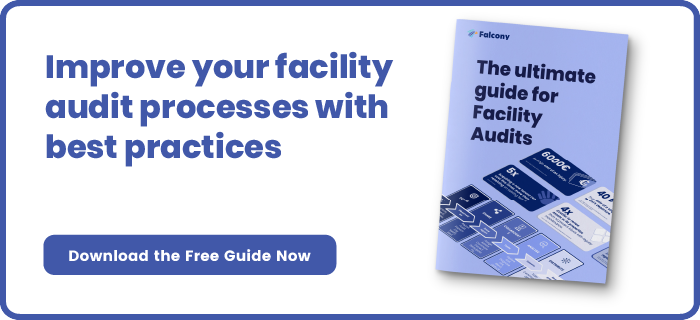In the realm of process improvement and operational excellence, various methodologies have emerged to address the challenges businesses face in enhancing efficiency, reducing waste, and delivering value to customers. Among these methodologies, Lean Six Sigma and 5S stand out as powerful tools that have revolutionized the way organizations operate. While they might appear distinct at first glance, a closer examination reveals striking commonalities that underscore their effectiveness. In this blog post, we delve into the shared principles and practices that make Lean Six Sigma and 5S methodologies a dynamic duo in achieving process optimization.
Understanding Lean Six Sigma and 5S
Before we delve into their commonalities, let's briefly explore what Lean Six Sigma and 5S methodologies entail:
-
Lean Six Sigma: Lean Six Sigma is a data-driven approach that combines the principles of Lean and Six Sigma methodologies. Lean focuses on eliminating waste and increasing process flow, while Six Sigma aims to reduce defects and variations in processes. When combined, these methodologies create a comprehensive framework for continuous improvement.
-
5S: The 5S methodology is a set of five Japanese words - Seiri (Sort), Seiton (Set in Order), Seiso (Shine), Seiketsu (Standardize), and Shitsuke (Sustain). 5S focuses on creating an organized and efficient workplace by eliminating clutter, optimizing layouts, and establishing standard procedures.
Shared Principles
-
Waste Reduction: Both Lean Six Sigma and 5S methodologies prioritize the identification and elimination of waste. Lean Six Sigma uses the DMAIC (Define, Measure, Analyze, Improve, Control) cycle to identify sources of waste and inefficiency, while 5S targets waste through the sorting, organizing, and standardizing steps of its methodology.
-
Continuous Improvement: Both methodologies advocate for a culture of continuous improvement. Lean Six Sigma's iterative approach and emphasis on data-driven decision-making align with 5S's concept of sustaining improvements over time.
-
Process Focus: Lean Six Sigma and 5S both revolve around analyzing and improving processes. Lean Six Sigma's emphasis on process variation reduction complements 5S's goal of streamlining processes to enhance efficiency.
-
Employee Involvement: Both methodologies recognize the importance of involving employees at all levels in improvement efforts. 5S encourages employees to take ownership of their workspace, while Lean Six Sigma promotes collaboration among cross-functional teams.
-
Standardization: Standardization is a crucial aspect of both methodologies. While 5S seeks to standardize procedures and layouts, Lean Six Sigma emphasizes the creation of standardized work processes to minimize variability.
-
Data-Driven Approach: Data plays a central role in both Lean Six Sigma and 5S. Lean Six Sigma relies on statistical analysis to identify root causes and quantify improvements, while 5S uses data to track progress and measure the impact of organization and cleanliness efforts.

Differences Between Lean Six Sigma and 5S Methodologies
While Lean Six Sigma and 5S share common principles, they also have distinct characteristics that set them apart:
-
Scope and Focus:
- Lean Six Sigma: Primarily focuses on improving process performance by reducing variation and defects. It's applicable across various industries and can address a wide range of complex issues.
- 5S: Concentrates on optimizing workplace organization, cleanliness, and standardization. Its scope is more limited to physical workspaces and processes.
-
Complexity:
- Lean Six Sigma: Involves a structured approach using the DMAIC or DMADV (Define, Measure, Analyze, Improve, Control / Define, Measure, Analyze, Design, Verify) methodologies. It employs statistical tools for analysis and improvement.
- 5S: Is comparatively simpler and intuitive, relying on five straightforward steps to organize and optimize the workspace.
-
Problem Solving:
- Lean Six Sigma: Primarily used for solving complex problems, often requiring data analysis to identify root causes and implement solutions.
- 5S: Addresses more immediate and visible issues related to workspace organization, cleanliness, and efficiency.
-
Implementation Time:
- Lean Six Sigma: Projects can take longer to complete due to the rigorous data analysis and improvement phases.
- 5S: Implementation is usually faster, as it involves relatively simple actions to improve the immediate workspace.
-
Skill Requirements:
- Lean Six Sigma: Requires trained experts who are well-versed in statistical analysis and problem-solving techniques.
- 5S: Can be implemented by employees at various levels, and expertise in statistical analysis is not necessary.
Final thoughts
Lean Six Sigma and 5S methodologies complement each other by offering different approaches to process improvement and operational excellence. While Lean Six Sigma is more data-driven and suitable for complex problem-solving, 5S focuses on immediate workspace optimization and efficiency. Both methodologies provide checklists that guide organizations through their respective processes, enabling them to streamline operations, reduce waste, and achieve their goals of delivering value to customers and stakeholders.

We are building the world's first operational involvement platform. Our mission is to make the process of finding, sharing, fixing and learning from issues and observations as easy as thinking about them and as rewarding as being remembered for them.
By doing this, we are making work more meaningful for all parties involved.
More information at falcony.io.






